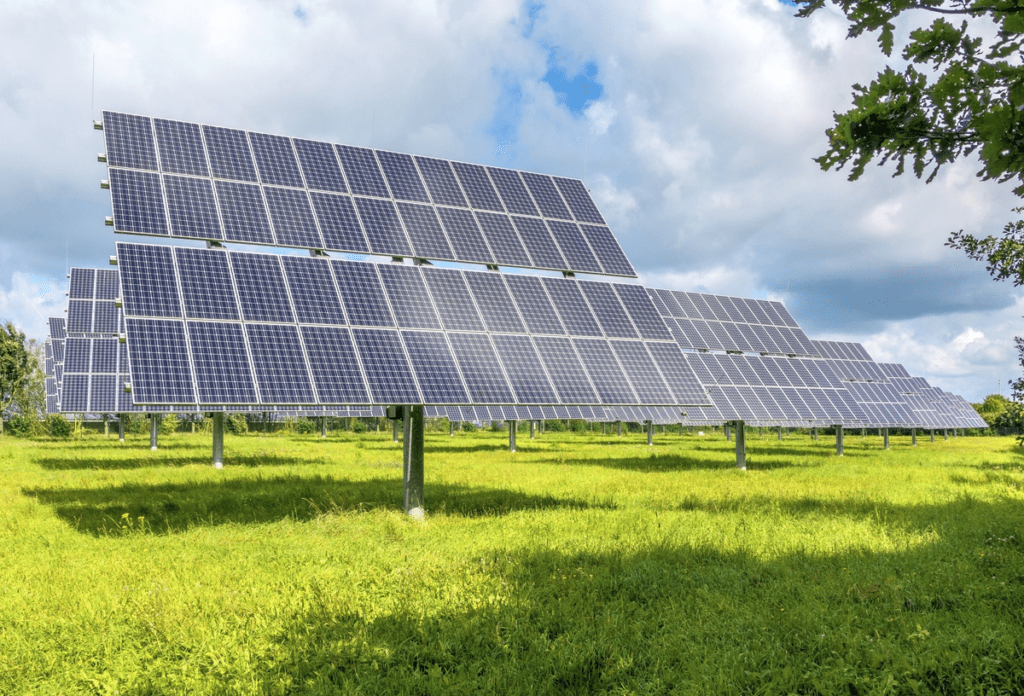Introduction
Renewable energy is playing an increasingly vital role in our quest for a sustainable and eco-friendly future. As the world faces the challenges of climate change, pollution, and dwindling natural resources, the adoption of renewable energy sources offers a beacon of hope. In this article, we will explore the myriad ways in which renewable energy helps the environment, from reducing greenhouse gas emissions to mitigating environmental risks. Join us on this enlightening journey as we uncover the transformative power of renewable energy. Renewable energy, also known as clean energy, refers to energy sources that are naturally replenished and have a minimal environmental impact. These sources include solar power, wind energy, hydropower, geothermal energy, and biomass. Unlike fossil fuels such as coal, oil, and natural gas, renewable energy does not deplete finite resources and does not contribute significantly to climate change. By harnessing the power of nature, renewable energy offers a sustainable and environmentally friendly alternative to traditional energy sources.

Reduced Greenhouse Gas Emissions & Improved Air Quality
One of the primary benefits of renewable energy is its ability to reduce greenhouse gas emissions. Greenhouse gases, such as carbon dioxide (CO2), methane (CH4), and nitrous oxide (N2O), trap heat in the Earth’s atmosphere, leading to global warming and climate change. Fossil fuel combustion is the largest source of these emissions, contributing to the intensification of natural disasters, rising sea levels, and adverse weather patterns.
Renewable energy sources produce little to no greenhouse gas emissions during electricity generation. Solar panels convert sunlight into electricity without any emissions, while wind turbines harness the power of wind without burning fossil fuels. In comparison, traditional power plants that rely on coal or natural gas release substantial amounts of CO2 into the atmosphere.
In addition to reducing greenhouse gas emissions, renewable energy significantly improves air quality. Fossil fuel power plants emit pollutants such as sulfur dioxide (SO2), nitrogen oxides (NOx), and particulate matter, which have detrimental effects on human health and the environment.
Renewable energy technologies, on the other hand, produce electricity without releasing harmful pollutants. Solar and wind power systems have zero emissions, contributing to cleaner air and a healthier environment. By transitioning to renewable energy, we can mitigate respiratory diseases, reduce smog formation, and improve the quality of life for communities around the world.

Conservation of Natural Resources & Environmental Risks
Renewable energy sources offer a sustainable alternative to fossil fuels, which are finite resources. Traditional energy sources are extracted from the Earth at a rapid pace, leading to resource depletion and environmental degradation. In contrast, renewable energy harnesses the natural processes that constantly replenish themselves, such as sunlight, wind, and flowing water.
By utilizing renewable energy, we can preserve precious natural resources for future generations. Moreover, the extraction and transportation of fossil fuels often disrupt ecosystems and threaten biodiversity. Embracing renewable energy promotes the conservation of natural habitats, protecting vulnerable species, and maintaining ecological balance. Water scarcity is a pressing global issue, with many regions facing water stress and scarcity due to climate change and population growth. Fossil fuel extraction and power generation require significant amounts of water, contributing to further strain on water resources.
Renewable energy technologies, such as solar and wind power, are water-efficient and do not deplete water supplies. Unlike fossil fuel-based power plants, which consume vast quantities of water for cooling and steam generation, renewable energy systems operate without the need for extensive water usage. By embracing renewable energy, we can conserve water resources and promote sustainable development. The extraction, transportation, and combustion of fossil fuels pose significant environmental risks, including oil spills, groundwater contamination, and air pollution. These risks not only harm the environment but also endanger human health and disrupt ecosystems.
Renewable energy sources offer a safer alternative by minimizing the potential for accidents and disasters. For example, offshore wind farms and solar installations do not carry the same risks as offshore oil drilling or coal mining. By transitioning to renewable energy, we can mitigate environmental risks and protect our planet from devastating consequences.

Economic Benefits
Renewable energy presents numerous economic advantages, creating opportunities for job growth, local economic development, and reducing dependence on imported fossil fuels. The renewable energy sector has the potential to generate a substantial number of jobs in areas such as manufacturing, installation, and maintenance of renewable energy systems. Moreover, investing in renewable energy infrastructure stimulates local economies, attracting investments and driving innovation.
Additionally, relying on renewable energy sources reduces a country’s dependence on imported fossil fuels. This enhances energy security, shields economies from volatile oil prices, and reduces geopolitical tensions associated with resource conflicts. By embracing renewable energy, we can achieve economic prosperity while safeguarding the environment.

Energy Independence
Renewable energy promotes energy independence by reducing reliance on foreign oil and non-renewable resources. Countries that heavily depend on imported fossil fuels are vulnerable to price fluctuations, supply disruptions, and geopolitical conflicts. By harnessing local renewable energy resources, nations can diversify their energy mix and enhance energy self-sufficiency.
Energy independence empowers communities and reduces their vulnerability to external factors. Local renewable energy projects enable communities to produce their own electricity, creating a sense of ownership and resilience. Moreover, decentralized energy production reduces transmission losses and enhances the reliability of the electricity grid.

Technological Advancements
Renewable energy is driving innovation and technological advancements in the energy sector. Research and development efforts have led to significant improvements in the efficiency and cost-effectiveness of renewable energy technologies. Solar panels have become more affordable and efficient, while wind turbines have become larger and more productive.
Renewable energy has witnessed significant technological advancements in recent years, driving its rapid growth and adoption worldwide. These advancements have been instrumental in making renewable energy sources more efficient, cost-effective, and viable alternatives to traditional fossil fuels. Here are some notable technological advancements in renewable energy:
- Solar Photovoltaics (PV): Advances in PV technology have led to increased solar panel efficiency and reduced manufacturing costs. Innovations include the development of new materials (such as perovskite solar cells), improved cell architectures, and enhanced manufacturing processes.
- Wind Power: Modern wind turbines have become larger, more efficient, and capable of generating higher power outputs. Improved blade designs, advanced control systems, and optimized wind farm layouts have contributed to increased energy capture and reduced operational costs.
- Energy Storage: The development of high-capacity and cost-effective energy storage systems has addressed the intermittent nature of renewable energy sources. Technologies like lithium-ion batteries, flow batteries, and advanced fuel cells enable efficient storage and retrieval of energy for later use, improving grid stability and enabling greater integration of renewables.
- Grid Integration and Smart Grids: Advanced grid management systems and smart grid technologies facilitate the integration of renewable energy into existing power grids. These systems enable better monitoring, control, and coordination of electricity generation, consumption, and storage, enhancing grid reliability and enabling more efficient utilization of renewable resources.
- Tidal and Wave Energy: Innovations in tidal and wave energy converters have resulted in more efficient and reliable devices for harnessing energy from oceanic sources. Improved designs, novel materials, and advanced control systems are enabling the development of commercial-scale tidal and wave energy farms.
- Geothermal Energy: Technological advancements in geothermal energy extraction and conversion techniques have expanded the utilization of this renewable resource. Enhanced geothermal systems (EGS) and binary cycle power plants have improved the efficiency and feasibility of harnessing heat from the Earth’s interior.
- Hydrogen Production: Electrolysis technologies have advanced, enabling the cost-effective production of hydrogen using renewable electricity. Hydrogen produced from renewable sources can serve as a clean fuel for transportation, industrial processes, and energy storage.
- Advanced Biomass Conversion: Advances in biomass conversion technologies, such as gasification, pyrolysis, and biochemical processes, have improved the efficiency and sustainability of converting organic matter into biofuels and other valuable products.
- Solar Thermal Power: Concentrated solar power (CSP) systems have undergone advancements in thermal energy storage and receiver technologies, allowing for continuous electricity generation even during cloudy periods or at night.
- Energy Efficiency and Demand-Side Management: Technological advancements in energy efficiency and demand-side management techniques have reduced energy consumption and optimized energy usage patterns. Smart appliances, building automation systems, and energy-efficient designs contribute to overall energy conservation and optimization.
These technological advancements in renewable energy have contributed to the increased deployment and integration of renewable sources in the global energy mix. As research and development continue, it is expected that further breakthroughs will emerge, driving the ongoing transition to a more sustainable and cleaner energy future.
Technological advancements in renewable energy also pave the way for energy storage solutions, such as batteries and pumped hydro storage. These storage systems enable the capture and utilization of excess renewable energy, addressing the intermittency challenge and ensuring a stable and reliable energy supply.

Integration Challenges and Solutions
Integrating renewable energy into existing energy infrastructure poses certain challenges. The intermittent nature of renewable energy sources, such as solar and wind, requires careful planning and grid management. However, several solutions are being implemented to address these challenges.
Smart grids play a crucial role in integrating renewable energy by enabling real-time monitoring, demand response, and efficient energy distribution. Energy storage systems, such as batteries and pumped hydro storage, store excess energy during periods of high generation and release it when demand is high.
Government policies and incentives are also essential in overcoming integration challenges. Feed-in tariffs, tax incentives, and renewable portfolio standards encourage the adoption of renewable energy and provide a supportive framework for its integration.
Community Engagement and Empowerment
Renewable energy projects offer opportunities for community engagement and empowerment. Unlike centralized fossil fuel power plants, renewable energy projects can be community-owned and decentralized, allowing local residents to actively participate in the energy transition.
Community-based renewable energy initiatives foster a sense of ownership, pride, and cooperation. Residents can invest in renewable energy projects, reap economic benefits, and have a say in local energy decisions. This engagement not only strengthens community bonds but also accelerates the adoption of renewable energy solutions.
Case Studies
Numerous successful renewable energy projects around the world demonstrate the tangible environmental benefits. For instance, the Ivanpah Solar Power Facility in the United States generates clean electricity using concentrated solar power technology, reducing CO2 emissions by approximately 400,000 tons per year. In Denmark, wind power accounts for over 50% of electricity consumption, contributing to a substantial reduction in greenhouse gas emissions.
These case studies highlight the feasibility and effectiveness of renewable energy in addressing environmental challenges. By learning from these examples, we can replicate their success and drive the global transition to renewable energy.
Public Awareness and Education
Public awareness and education play a pivotal role in the widespread adoption of renewable energy. Raising awareness about the benefits of renewable energy is crucial for changing attitudes and behaviors toward energy consumption.
Education initiatives should focus on promoting energy conservation, energy efficiency, and the advantages of renewable energy sources. By integrating renewable energy education into school curricula and engaging communities through awareness campaigns, we can foster a sustainable energy mindset for future generations.

Future Prospects and Challenges
The future prospects of renewable energy are promising, but challenges remain. Continued investment in research and development is necessary to improve the efficiency and cost-effectiveness of renewable energy technologies. Innovations such as floating solar farms, advanced wind turbines, and next-generation solar panels hold tremendous potential for further advancements.
Intermittency and energy storage continue to be challenges for renewable energy integration. However, advancements in energy storage technologies, coupled with smarter grid management systems, are gradually mitigating these challenges.
Global efforts, such as the Paris Agreement and national renewable energy targets, are driving the clean energy transition. Collaboration between governments, businesses, and individuals is essential for achieving a sustainable future powered by renewable energy.
Top 10 books on Renewable Energy
Certainly! Here is a list of 10 books on renewable energy:
- “Renewable Energy: Power for a Sustainable Future” by Godfrey Boyle
- “Renewable Energy Resources” by John Twidell and Tony Weir
- “Renewable Energy Systems: A Smart Energy Systems Approach to the Choice and Modeling of 100% Renewable Solutions” by Henrik Lund
- “Renewable Energy: Sustainable Concepts for the Energy Change” by Roland Wengenmayr and Thomas Bührke
- “Renewable Energy Finance: Powering the Future” by Charles W. Donovan
- “Renewable Energy: Technology, Economics, and Environment” by Martin Kaltschmitt, Wolfgang Streicher, and Andreas Wiese
- “Renewable Energy Conversion, Transmission, and Storage” by Bent Sørensen
- “Introduction to Renewable Energy” by Vaughn C. Nelson and Kenneth L. Starcher
- “Renewable Energy Integration: Practical Management of Variability, Uncertainty, and Flexibility in Power Grids” by Lawrence E. Jones
- “Renewable Energy: Physics, Engineering, Environmental Impacts, Economics, and Planning” by Bent Sørensen
These books cover various aspects of renewable energy, including technology, economics, environmental impacts, policy, and integration into the energy system. They provide a comprehensive understanding of renewable energy sources, their potential, challenges, and opportunities. You can explore these books to gain valuable insights into the field of renewable energy and its significance in achieving a sustainable future.
Conclusion
Renewable energy is a transformative force that benefits the environment in numerous ways. By reducing greenhouse gas emissions, improving air quality, conserving natural resources, and mitigating environmental risks, renewable energy offers a sustainable and eco-friendly alternative to fossil fuels. The economic benefits, energy independence, and technological advancements associated with renewable energy further strengthen the case for its adoption. Community engagement and empowerment play a vital role in accelerating the energy transition, while public awareness and education create a foundation for sustainable energy practices. As we embrace renewable energy solutions, we pave the way for a cleaner, healthier, and more sustainable future. Let us join hands and strive towards a world powered by renewable energy.
FAQs
1. Are renewable energy sources completely emission-free? While renewable energy sources produce significantly fewer emissions compared to fossil fuels, they are not entirely emission-free. Some emissions, such as those associated with the manufacturing and transportation of renewable energy technologies, may still be present. However, these emissions are considerably lower than those associated with fossil fuel extraction and combustion.
2. How does renewable energy contribute to job creation? The renewable energy sector has a high potential for job creation. The installation, operation, and maintenance of renewable energy systems require a skilled workforce, providing employment opportunities in various fields, including engineering, manufacturing, construction, and research and development.
3. Can renewable energy replace all fossil fuel-based power plants? While a complete replacement of fossil fuel-based power plants with renewable energy sources is challenging, a gradual transition is feasible. The scalability and versatility of renewable energy technologies allow for their integration into the existing energy infrastructure. However, it requires a comprehensive approach that considers factors such as energy storage, grid management, and policy support.
4. What are the main barriers to renewable energy adoption? Barriers to renewable energy adoption include high initial costs, grid integration challenges, and policy and regulatory barriers. The upfront investment required for renewable energy projects can be a deterrent for some stakeholders. Additionally, integrating intermittent renewable energy into existing grids requires advanced infrastructure and management systems. Clear and supportive policies are essential to incentivize renewable energy deployment and overcome these barriers.
5. How can individuals contribute to the renewable energy transition? Individuals can contribute to the renewable energy transition by adopting energy-efficient practices, conserving energy, and supporting renewable energy initiatives in their communities. Installing solar panels on rooftops, using energy-efficient appliances, and advocating for renewable energy policies are some ways individuals can actively participate in the transition toward a sustainable energy future.

